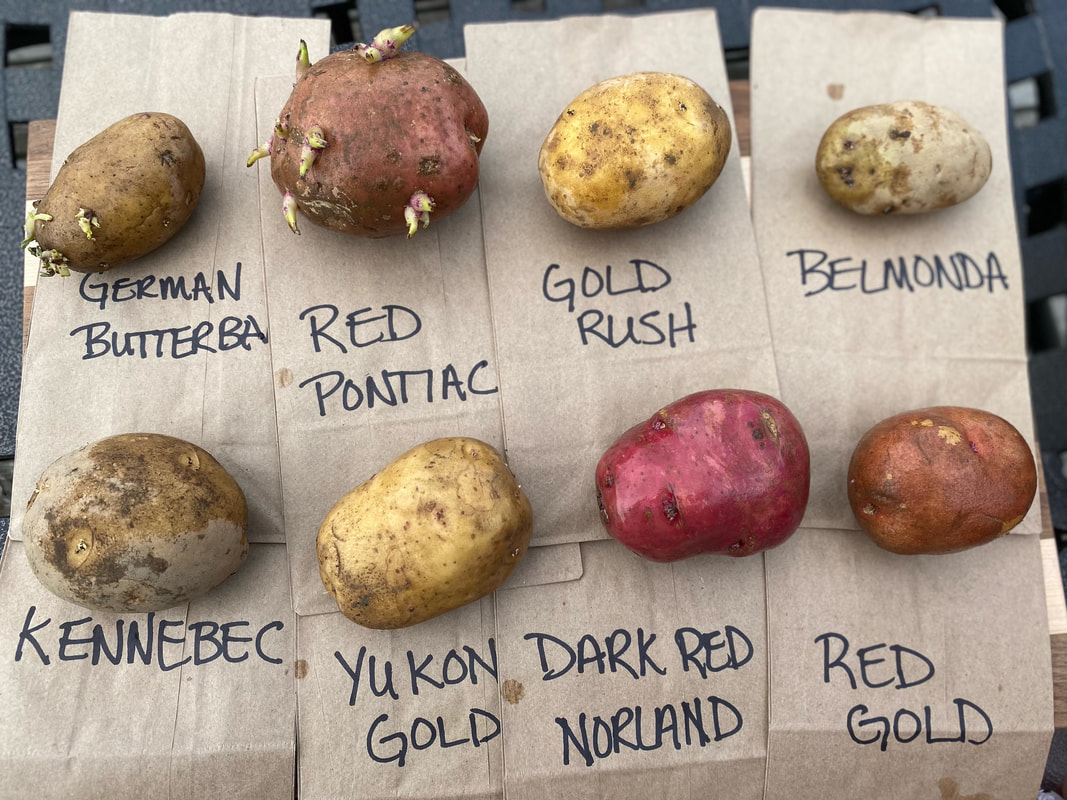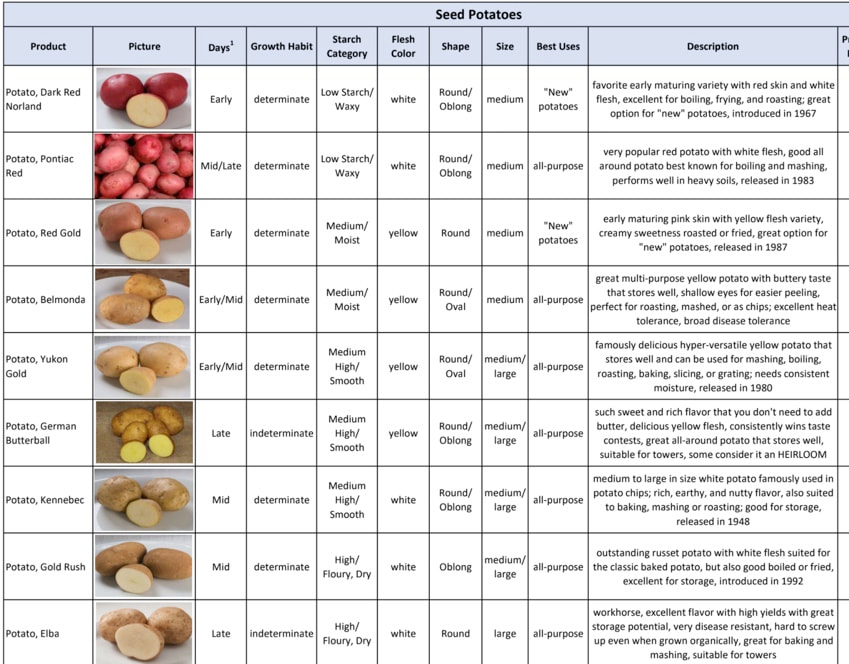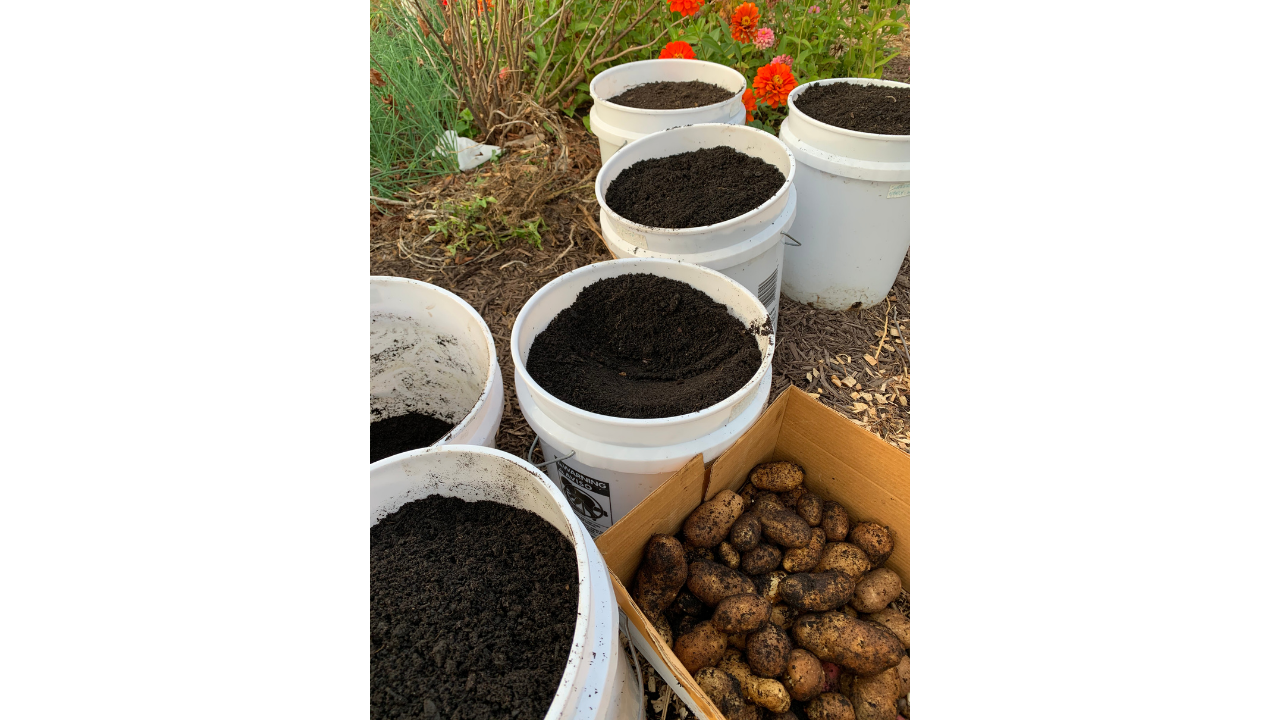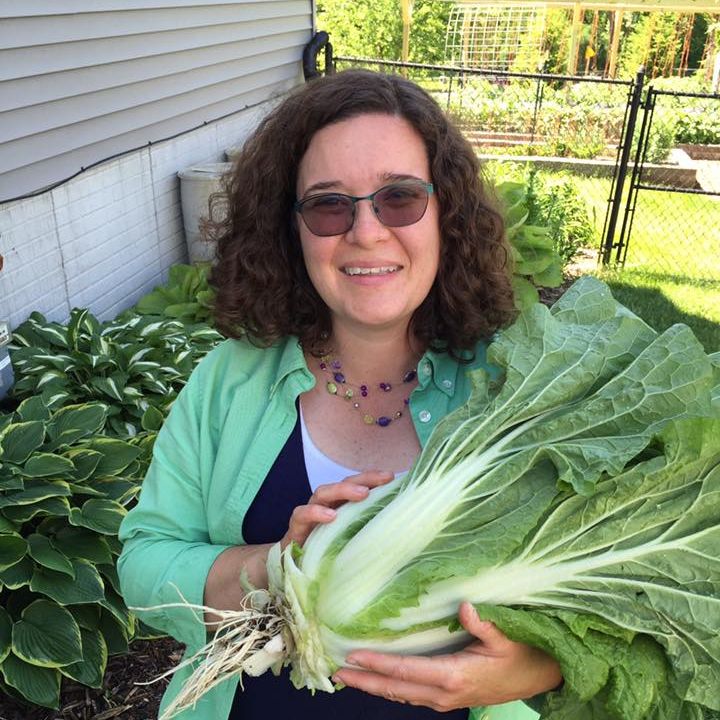How do you plan to grow your potatoes?Just like everything else you grow fresh, a fresh grown potato is a huge step up from the store bought potatoes that have been in storage since last harvest. Its also a great thing to grow if you are trying to avoid chemicals. They are not hard to grow but there are a couple of things you need to know in order to have success. People ask us all the time, "which potato should I grow?" Our response is, "How are you planning to grow it?" and "How do you plan to use it?" The first question, how do you plan to grow it, will drive the type of plant structure you need to select. What does the type of plant structure have to do with the variety I chose? Potatoes come in both determinate type plants and in indeterminate type plants. The potatoes grown on determinate type plants are grown on a single level at the same depth as the seed potato. Indeterminate plants grow potatoes on multiple levels with the lowest level being at the same depth as where you planted the seed potato. Determinate varieties only need to be planted 4 inches deep and don't need to be frequently mounded up. Indeterminate varieties can be planted the same depth but need to be mounded up several times throughout the growing season covering a large portion of the plant so additional potatoes can grow higher up the plant. If you are planting in a regular garden, it doesn't really matter which type you chose, but if you are planting in vertical container like a potato grow bag, box, or in a tower, you must chose an indeterminate variety if you want the plant to produce any potatoes (As demonstrated by every YouTube potato tower fail video by people who didn't know the difference). Common indeterminate varieties include German Butterball, Elba, and Burbank Russet (the classic Idaho baked potato). Breeding efforts over the last century have resulted in earlier maturing varieties many of which are determinate varieties making it sometimes challenging to find indeterminate varieties in big box or farm supply stores. Generally speaking, indeterminate varieties take longer to mature because they grow on levels higher up the plant, so they are considered long day or full season varieties, however, not every long day/full season variety is an indeterminate so you have to do your homework if you are specifically looking for an indeterminate variety to plant in a potato grow bag, box, or a tower. Shorter day varieties (sometimes called early or mid season potatoes) are almost always determinates. How will you cook your fresh potatoes?The second question, how do you plan to use them, will help finalize your decision. Are you canning them, or making roasted new potatoes, potato salad, chunky mashed potatoes, creamy mashed potatoes, or baked potatoes? Potatoes fall along a spectrum with waxy on one end, starchy on the other end, with various grades in the middle we generally call all-purpose (some of which are more waxy and some are more starchy).
Waxy potatoes which are low in starch and high in moisture are great in any dish in which you want the potato to hold its structure. They have a firmer flesh and thinner skin than starchy potatoes. They are great roasted, in potato salad, and they hold their shape well in soups or if canned. Waxy potatoes will never make light and fluffy mashed potatoes, but they are perfect for their intended uses. French Fingerling and Russian Banana are examples that fall squarly on the waxy end of the spectrum. Dark Red Norland and Red Pontiac are examples that fall on the waxy end of the spectrum, but lean towards the all-purpose center. They make excellent fried new potatoes and are delicious in potato salad. On the other end of the spectrum, starchy potatoes are the classic baked potato and they make excellent fluffy mashed potatoes. Starchy potatoes flesh breaks down easily making then prime candidates for mashed potatoes. They absorb the flavors of the toppings so they are commonly paired with butter, sour cream, and other delicious flavors. Russets are the classic starchy potato. Elba and Gold Rush are outstanding dry and floury russet potatoes All-purpose potatoes fall in the middle of the spectrum and can be used for most commonly created potato dishes. Red Gold and Belmonda are great all-purpose potatoes that are closer to the waxy side so they have a more moist texture than the other all-purpose varieties. German Butterball and Kennebec are great all-purpose varieties that are closer to the starchy side so they have a more smooth consistency, but are drier than the other all-purpose varieties. The famous hyper-versatile potato that fits right in the middle of the spectrum and many people love is the Yukon Gold potato with a great balance of between waxy and starcy, wet and dry so that it can be used for just about anything a home chef can cook up. Comments are closed.
|
Archives
April 2022
Categories
All
|




 RSS Feed
RSS Feed